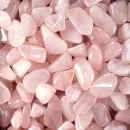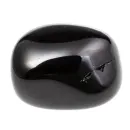Gemstones have always captivated the imagination of people with their beauty, rarity and mystery. Although diamonds, rubies, sapphires and emeralds are classified as precious stones, there is also a separate category known as semi-precious stones. These gemstones are interesting and valuable in their own way. In this blog, we will look at their history, meaning, properties and secondary value. We will also explore their interests and the
The Meaning of Semi-Precious Gemstones
Semi-precious stones, like their precious counterparts, carry special meaning. For example, amethyst is often associated with calmness and spiritual clarity. Turquoise is considered a stone of protection and wisdom. Each gemstone has a unique history that adds power and meaning.
History of Semi-Precious Gemstones
The use of semi-precious Gemstones dates back to ancient cultures. Amethyst was highly prized by the Greeks and Romans who believed it could prevent drunkenness. Turquoise was used in jewelry and amulets by the ancient Egyptians, symbolizing protection and life. These stones were not only loved for their beauty, but were also admired for their healing and restorative properties.
In the Americas, jade was revered by the Mayans and Aztecs for its beautiful green color and was believed to have spiritual powers. Similarly, lapis lazuli was widely used in decorative arts and jewelry throughout Asia as a symbol of nobility and prestige. The history of these precious stones is rich in traditions and centuries-old beliefs.
First Discoveries and Regions
Semi-precious stones were first discovered in different parts of the world. Amethyst was first found in regions of Greece and Egypt. Turquoise was mined in the Sinai region of Egypt more than 6,000 years ago. Jade has been discovered in parts of Central America, particularly Guatemala and Mexico. Exploration and mining continued for centuries and new mineral deposits were discovered in various parts of the world. Today, semi-precious stones come from a variety of sources, each adding their own unique properties and value.
List of Semi-Precious Stones
Amethyst, Citrine, Turquoise, Blue Topaz, Peridot, Jade, Garnet, Tourmaline, Moonstone, Malachite, Jasper, Rose Quartz, Tanzanite, Opal, Pearl, Black Onyx, Aquamarine, Topaz.
Here’s a comprehensive table that includes the region, properties, and approximate price per carat for various semi-precious gemstones. Note that the prices can vary based on quality, size, and market conditions.
| Gemstone | Region | Properties | Price per Carat ($) | images |
|---|---|---|---|---|
| Amethyst | Greece, Egypt, Brazil | Purple hues, hardness of 7, promotes tranquility | 2 – 10 |  |
| Citrine | Brazil, Spain, Russia | Yellow to orange hues, hardness of 7, energizing | 10 – 30 |  |
| Turquoise | Egypt, Iran, USA | Sky-blue to greenish-blue, hardness of 5-6 | 1 – 10 |  |
| Blue Topaz | Brazil, Nigeria | Blue hues, hardness of 8, soothing | 8 – 20 |  |
| Peridot | USA, China, Pakistan | Green hues, hardness of 6.5-7, brings good health | 50 – 80 |  |
| Jade | China, Guatemala | Green to white, hardness of 6-7, attracts harmony | 20 – 100 |  |
| Garnet | India, Madagascar | Red hues, hardness of 6.5-7.5, boosts energy | 5 – 10 |  |
| Tourmaline | Brazil, Afghanistan | Multiple colors, hardness of 7-7.5, protective | 50 – 200 |  |
| Moonstone | India, Sri Lanka | White with blue sheen, hardness of 6-6.5, calming | 10 – 30 |  |
| Malachite | Zambia, Russia | Green banded, hardness of 3.5-4, transformative | 5 – 15 |  |
| Jasper | Worldwide | Various colors, hardness of 6.5-7, nurturing | 1 – 5 |  |
| Rose Quartz | Brazil, Madagascar | Pink hues, hardness of 7, promotes love | 2 – 10 |  |
| Tanzanite | Tanzania | Blue to violet, hardness of 6.5-7, spiritual | 300 – 1000 |  |
| Opal | Australia, Ethiopia | Multi-color play, hardness of 5.5-6.5, inspiring | 50 – 300 |  |
| Pearl | Japan, China, Australia | Lustrous white, hardness of 2.5-4.5, purity | 100 – 2000 |  |
| Black Onyx | Brazil, India | Black, hardness of 6.5-7, grounding | 1 – 10 |  |
| Aquamarine | Brazil, Pakistan | Blue-green, hardness of 7.5-8, calming | 50 – 500 |  |
| Topaz | Brazil, Russia | Multiple colors, hardness of 8, brings clarity | 20 – 100 |  |
These values represent a general estimate. Prices can fluctuate based on gemstone quality, size, and market demand.
Why They Have Value
The value of secondary gemstones is the beauty, rarity and cultural value they bring. Their beautiful colors, unique shapes and historical associations make them highly sought after. Moreover, the skill in cutting and grinding these stones increases their beauty and market value.
Their power compared to precious stones makes them accessible to more people, even more. The visual benefits and healing properties attributed to these gemstones also contribute to their value.
Benefits and Properties of Semi-Precious Gemstones
Semi-precious gemstones are believed to offer various benefits and possess unique properties. For instance:
- Amethyst: Known for its calming properties, it is believed to promote tranquility and clarity of mind. It is often used in meditation and healing practices.
- Turquoise: Regarded as a protective stone, it is thought to bring good fortune and shield against negative energies. It is also associated with wisdom and communication.
- Jade: Valued for its protective and healing properties, it is believed to attract good luck and harmony. It is often used in jewelry and decorative items.
- Lapis Lazuli: Known for its deep blue color, it is thought to bring mental clarity and enhance creativity. It has been used historically as a symbol of royalty and honor.
The Properties of Semi-Precious Gemstones
Each semi-precious gemstone possesses unique physical and chemical properties that contribute to its allure:
- Amethyst: A variety of quartz, it exhibits a range of purple hues. It has a hardness of 7 on the Mohs scale, making it suitable for various types of jewelry.
- Turquoise: Known for its sky-blue to greenish-blue color, it is relatively soft with a hardness of 5-6. It is often used in rings, necklaces, and bracelets.
- Jade: Comprising two different minerals, nephrite and jadeite, it can vary in color from green to white. It is relatively tough, with a hardness of 6-7.
- Lapis Lazuli: Characterized by its intense blue color with golden flecks of pyrite, it has a hardness of 5-6. It has been used historically in decorative arts and jewelry.
Why They Are Called by Their Names
Gemstone names often reflect the physical location or region where they were first discovered. For example, the name ‘amethyst’ is derived from the Greek word ‘amethystos’ meaning ‘imperishable’, reflecting ancient beliefs about its effects. ‘Turquoise’ is derived from the French word ‘turquois’ meaning ‘Turkey’, as the stone was brought to Europe via Turkey.
‘Jade’ comes from the Spanish word ‘piedra de ijada’ meaning ‘side stone’, believed to cure kidney disorders. ‘Lapis lazuli’ is a combination of the Latin word ‘lapis’ meaning ‘stone’ and the Persian word ‘lazhward’ meaning ‘blue’.
Table of Semi-Precious Gemstones
| Gemstone | Region | Properties |
| Amethyst | Greece, Egypt | Purple hues, hardness of 7, promotes tranquility and clarity of mind |
| Turquoise | Egypt, Iran | Sky-blue to greenish-blue, hardness of 5-6, brings good fortune and protection |
| Jade | Mesoamerica, China | Green to white, hardness of 6-7, attracts good luck and harmony |
| Lapis Lazuli | Afghanistan, Chile | Intense blue with golden flecks, hardness of 5-6, enhances creativity and mental clarity |
Conclusion
The world of semi-precious minerals is rich in history, cultural significance, and unique properties. For centuries, these stones have captivated people with their beauty and have been called mystical powers. From their ancient inventions to their modern uses, semi-precious stones continue to be loved and prized. Their meanings, appeal, and qualities make them intriguing subjects of study and fascination. Whether used in jewelry, fine art, or spiritual practices, these Precious stones hold a special place in human culture and history.


1 comment
Thanks for sharing information about these gemstones